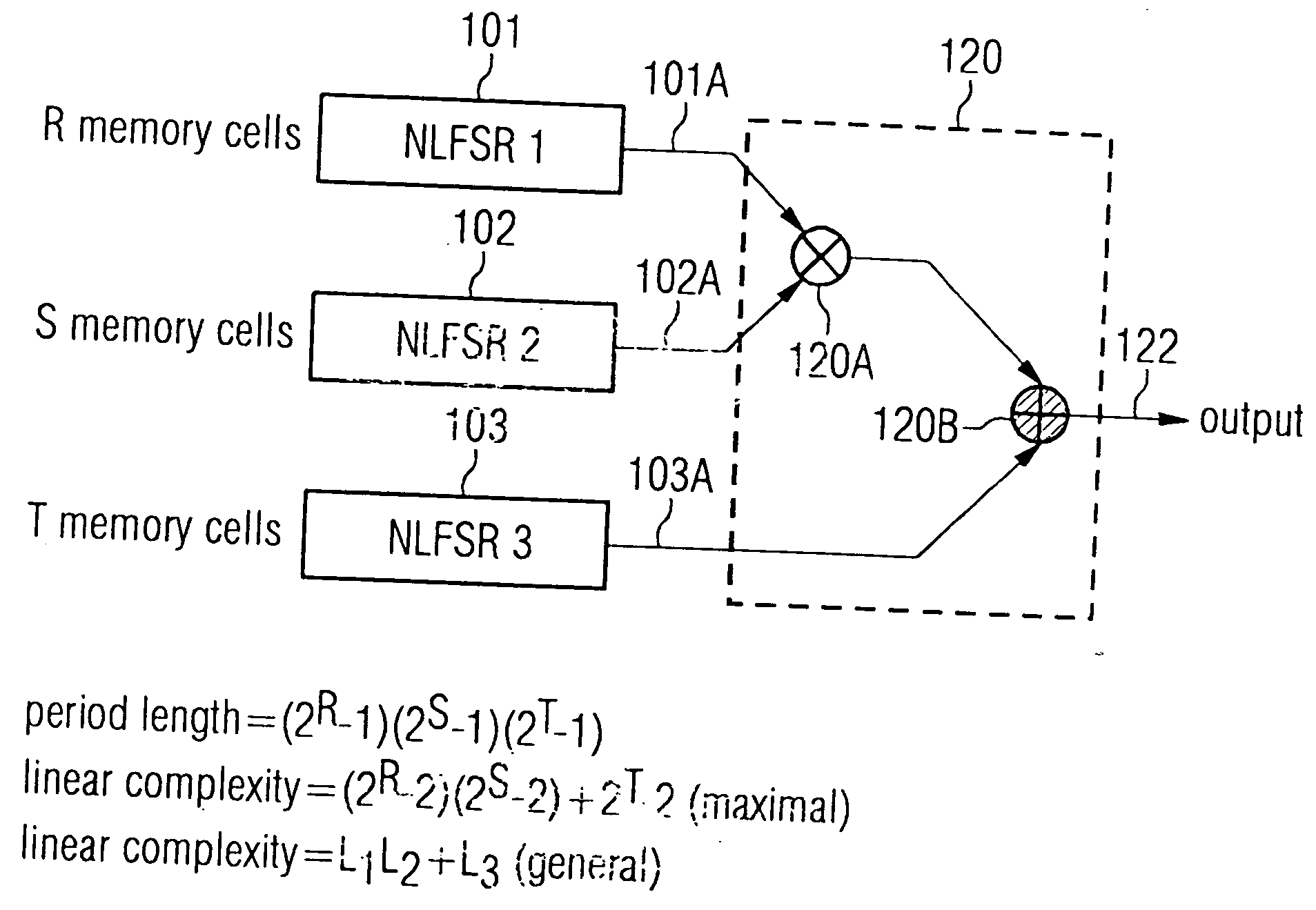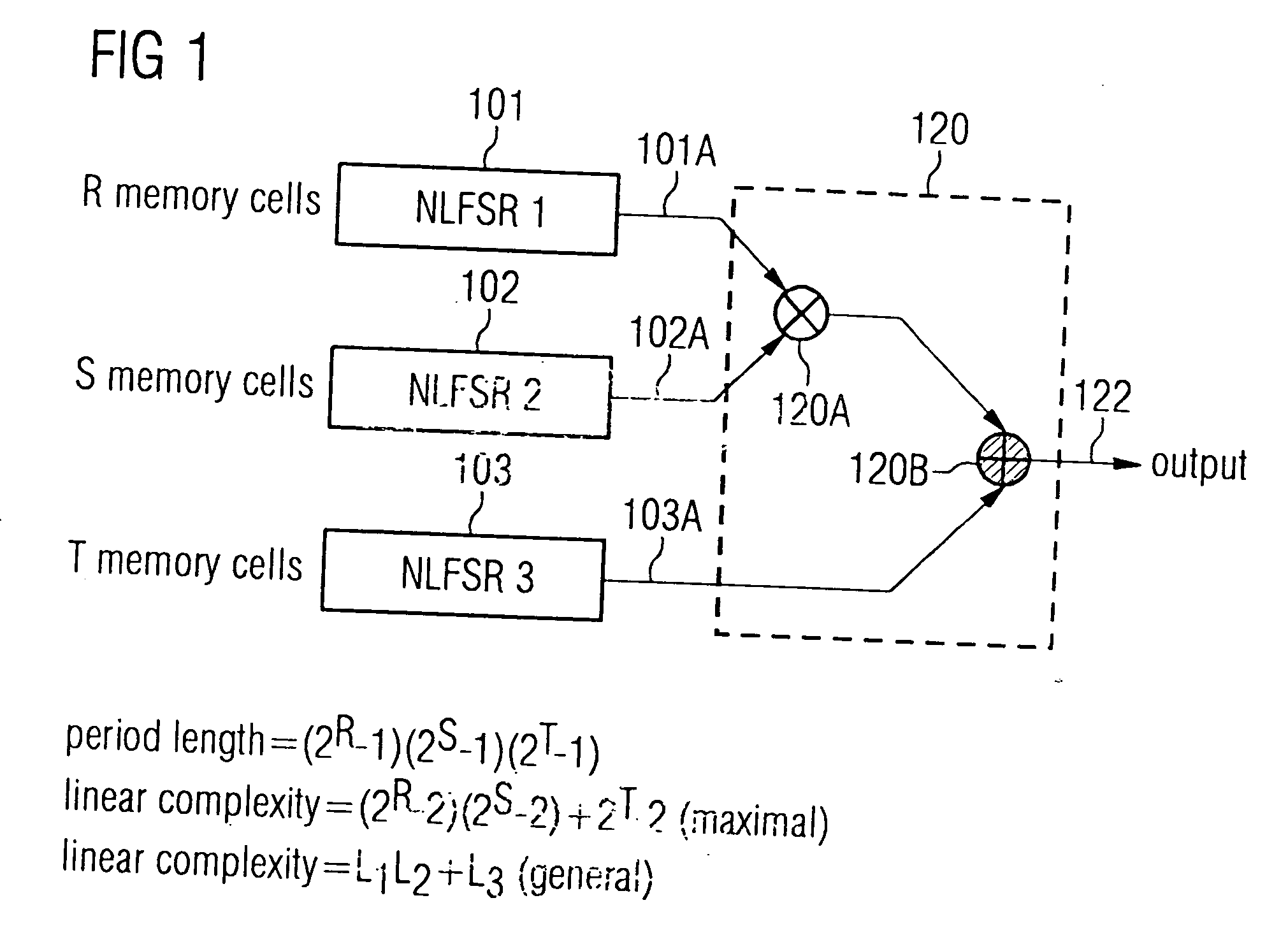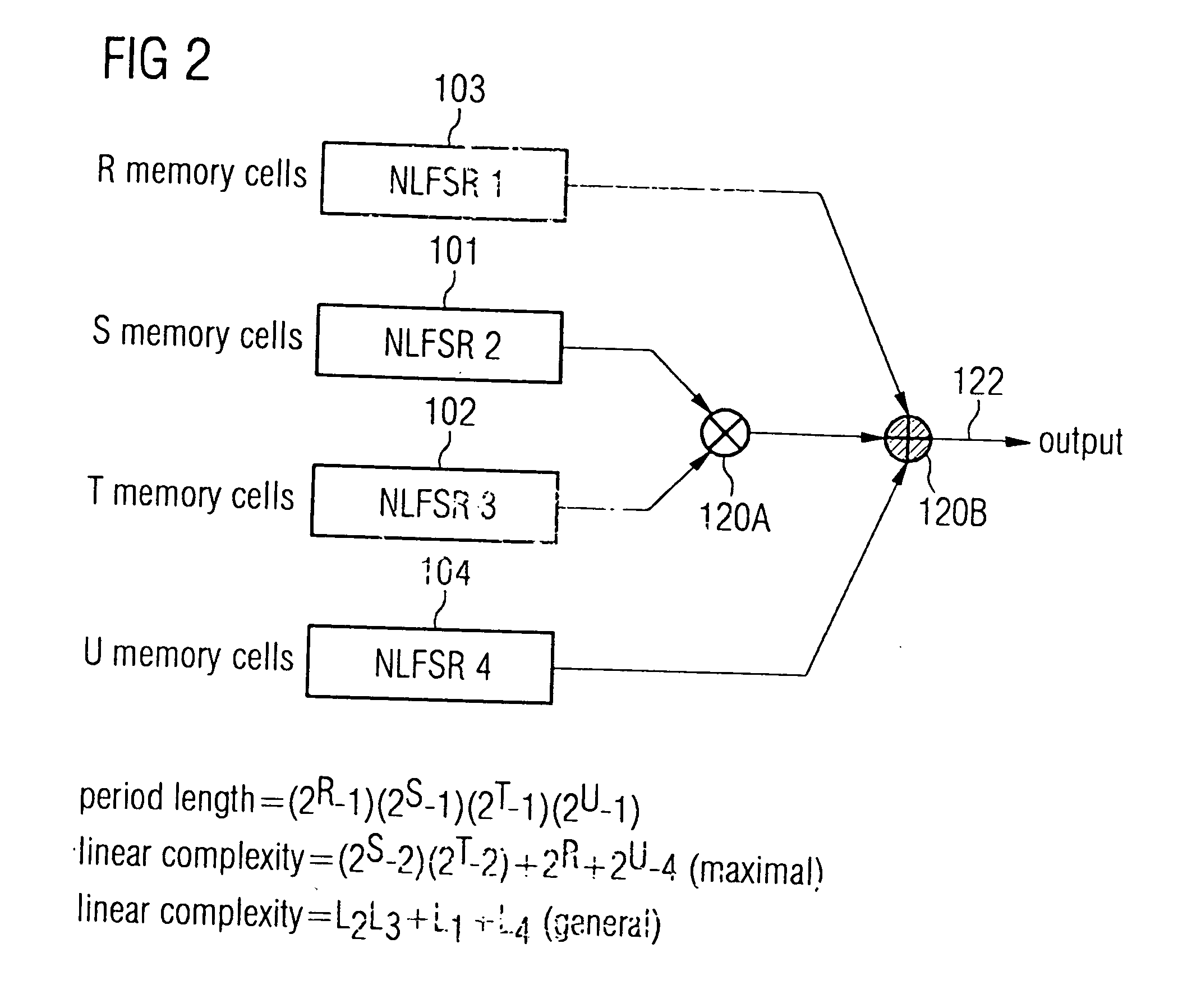Pseudorandom number generator
a generator and pseudonym technology, applied in the field of pseudonym generators, can solve the problems of small linear complexity, increase in linear complexity, and increase in hardware costs, and achieve the effects of high flexibility in producing special linear complexity or period length, high degree of freedom, and cost-effective
- Summary
- Abstract
- Description
- Claims
- Application Information
AI Technical Summary
Benefits of technology
Problems solved by technology
Method used
Image
Examples
Embodiment Construction
[0057]FIG. 1 shows a pseudorandom number generator according to a first embodiment of the present invention. The pseudorandom number generator includes a first elemental shift register 101 having a non-linear feedback feature and a first elemental shift register output 101a and a second elemental shift register 102 which preferably also has a non-linear feedback feature. The second elemental shift register, as does the first elemental shift register 101, also includes a second elemental shift register output 102a. The two elemental shift register outputs 101a, 102a are combined by means of combining means which, in FIG. 1, is generally designated by 120. The combining means 120, on the output side, provides a combined signal on an output line 122 which—over the time—includes a pseudorandom number sequence and, preferably a bit sequence.
[0058] The inventive pseudorandom number generator can principally consist of two elemental shift registers 101, 102, wherein at least one, but pref...
PUM
 Login to View More
Login to View More Abstract
Description
Claims
Application Information
 Login to View More
Login to View More - R&D
- Intellectual Property
- Life Sciences
- Materials
- Tech Scout
- Unparalleled Data Quality
- Higher Quality Content
- 60% Fewer Hallucinations
Browse by: Latest US Patents, China's latest patents, Technical Efficacy Thesaurus, Application Domain, Technology Topic, Popular Technical Reports.
© 2025 PatSnap. All rights reserved.Legal|Privacy policy|Modern Slavery Act Transparency Statement|Sitemap|About US| Contact US: help@patsnap.com



